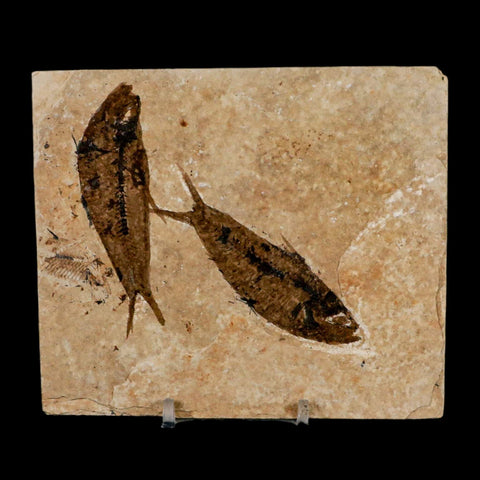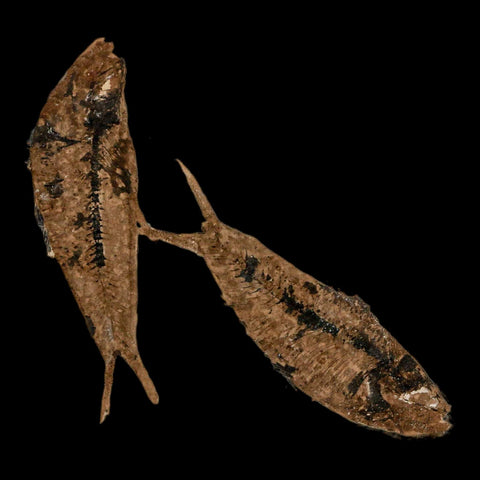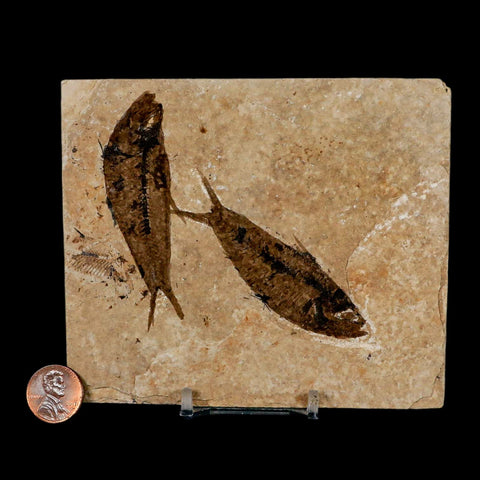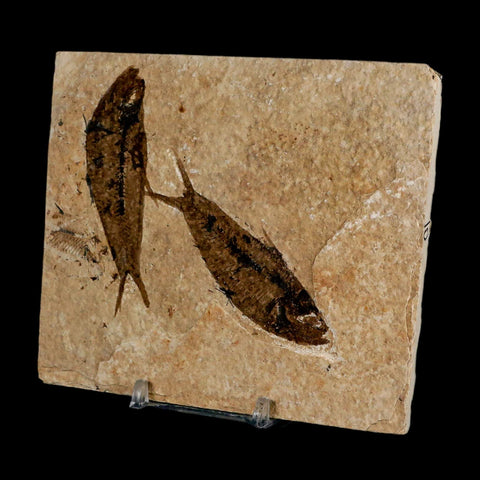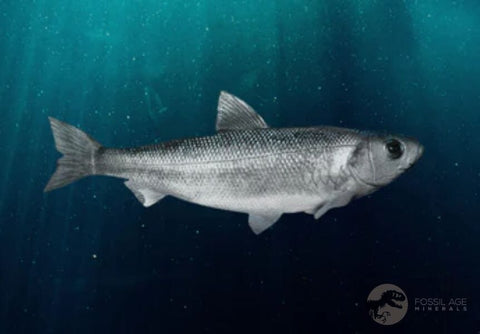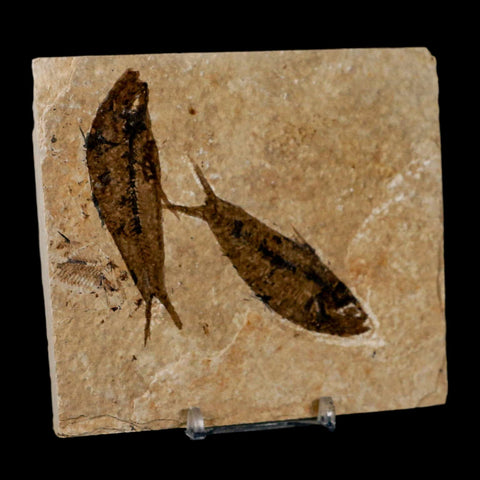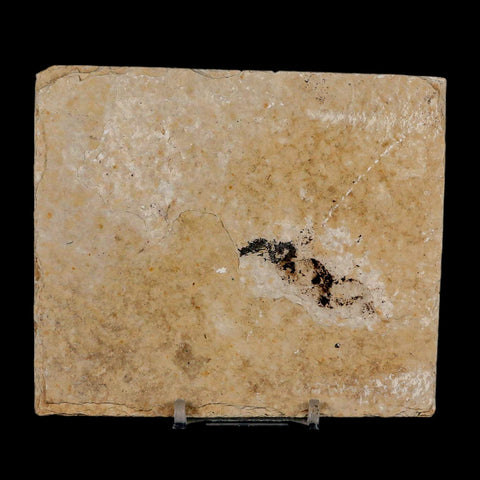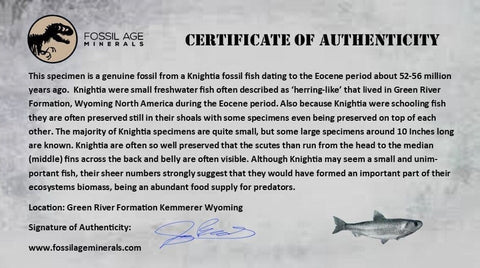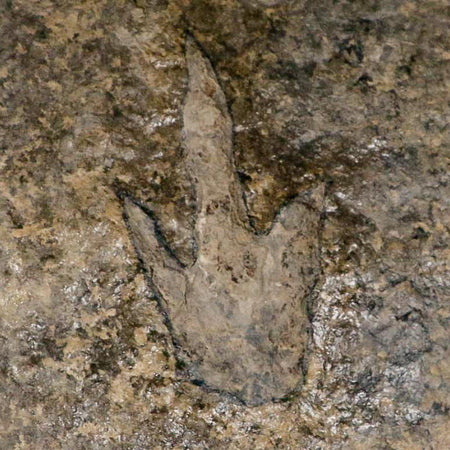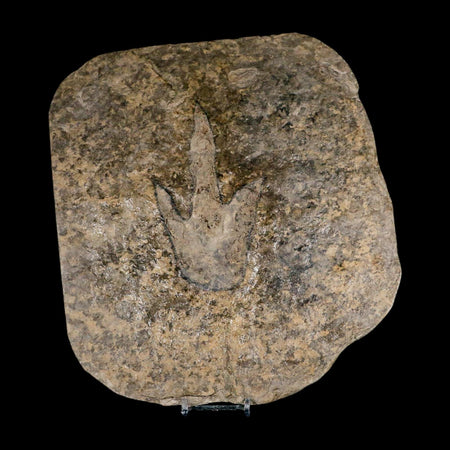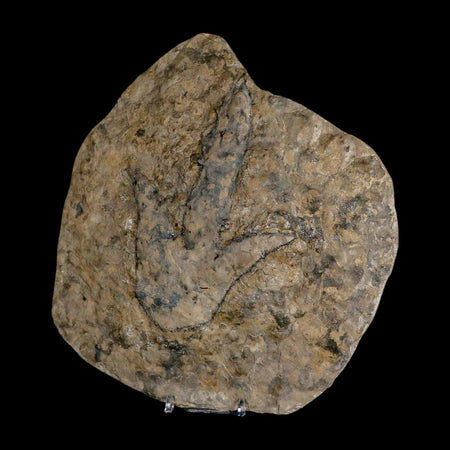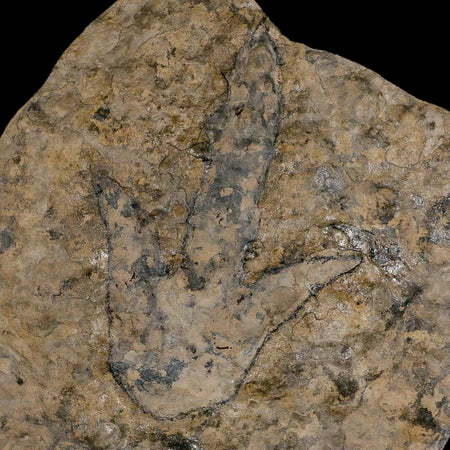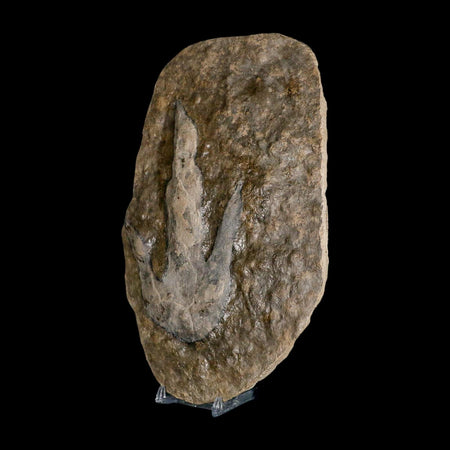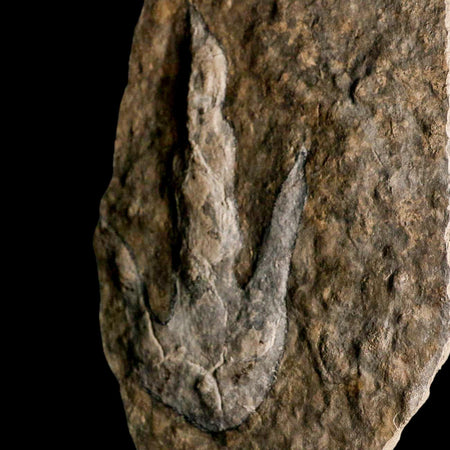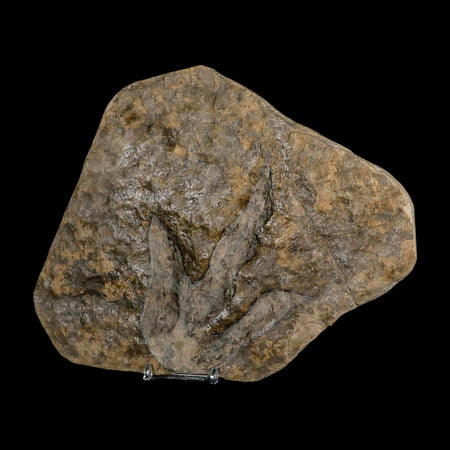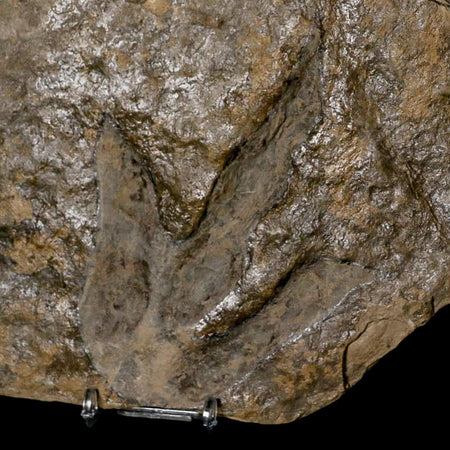2 Two Knightia Eocaena Fossil Fish Green River FM Wyoming Eocene Age COA & Stand
Location: Kemmerer, Wyoming
Weight: 6.4 Ounces
Dimensions: 4.8 Inches Long, 4.1 Inches Wide, 0.3 Inches Thick (Plate)
Fish One Dimensions: 2.9 Inches Long, 1.1 Inches Wide
Fish Two Dimensions: 2.9 Inches Long, 0.9 Inches Wide
Comes with a Certificate of Authenticity.
Comes with a Free Stand.
The item pictured is the one you will receive.
50 million years old, Eocene age
Knightia Eocaena is the most common fish in Fossil Lake and may be the most commonly articulated vertebrate fossil in the world. It is Wyoming's State Fossil. Length: up to 25 cm (10 in).
Fifty million years ago, ancient Fossil Lake existed in what is now southwest Wyoming. Of its estimated maximum extent of 930 square miles, about 500 square miles of sediment remain. The 230 square miles at the center of the ancient lake-bed contain exceptionally fossil-rich sediments and related geologic features, including deltas, beaches, springs, and rocks from the center and nearshore environments.
Fossil Lake’s distinctive chemical environment inhibited decomposition and scavenging, allowing organic remains to be exquisitely preserved within finely layered limestone deposits. These laminated limestones boast the world’s densest assemblage of fossil fish. Alongside diverse aquatic species and geological features, Fossil Lake represents the premier Paleogene archive of a freshwater lacustrine ecosystem. Since its initial discovery in the 1870s, an abundance of impeccably preserved fossil fish have been unearthed. This assemblage encapsulates a complete aquatic biota—including cyanobacteria, plants, insects, crustaceans, amphibians, reptiles, birds, and mammals such as the earliest pantolestid. The surrounding subtropical terrestrial ecosystem is similarly recorded through rare fossils of horses, snakes, bats, lizards, and over 325 varieties of plant remains, offering a comprehensive portrait of Eocene biodiversity.



